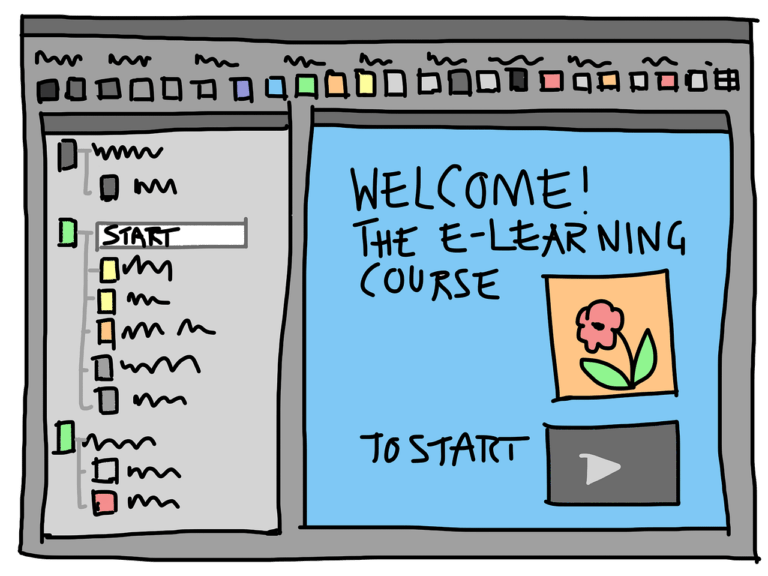What is Instructional Design?

What is Instructional Design – Instructional design is a crucial field that focuses on creating effective learning experiences. It involves the systematic process of analyzing, designing, developing, implementing, and evaluating instructional materials and methods to improve learning outcomes. But what exactly is an instructional designer? Let’s dive into the world of instructional design and explore the role of an instructional designer.
Read: The Future Of Instructional Design With AI
What is Instructional Design
Instructional design is the systematic process of analyzing learning needs and developing instructional materials and experiences to meet those needs. It involves the application of learning and instructional theory to ensure the quality of instruction and the effective transfer of knowledge, skills, and attitudes to learners. Instructional designers use various models and strategies to create learning experiences that cater to different learning styles and preferences, and they continually evaluate and refine their designs based on feedback and data.
The Role of an Instructional Designer
An instructional designer is a professional who applies learning theories, principles, and strategies to create engaging and effective learning experiences. They work closely with subject matter experts, stakeholders, and learners to identify learning needs, set objectives, and develop appropriate instructional materials.
Instructional designers are responsible for:
1. Conducting needs assessments and analyzing learner characteristics
2. Defining learning objectives and aligning them with organizational goals
3. Selecting appropriate instructional methods and delivery formats
4. Developing engaging content and interactive learning activities
5. Designing assessments to measure learning outcomes
6. Implementing and evaluating the effectiveness of instructional interventions
7. Continuously improving and updating instructional materials based on feedback and data
Skills and Competencies of an Instructional Designer
Instructional designers possess a unique blend of skills that combine creativity, technology, and pedagogy. Some of the key skills and competencies required for success in this field include:
1. Instructional design models and theories: Proficiency in applying various instructional design models, such as ADDIE (Analysis, Design, Development, Implementation, and Evaluation) and Rapid Prototyping, to create effective learning solutions.
2. Learning theories and principles: Understanding of learning theories, such as behaviorism, cognitivism, and constructivism, and their application in designing instructional materials.
3. Project management: Ability to manage multiple projects, collaborate with cross-functional teams, and ensure timely delivery of instructional materials.
4. Multimedia and technology: Proficiency in using various multimedia tools and technologies to create engaging and interactive learning experiences, such as e-learning authoring tools, video editing software, and virtual reality platforms.
5. Communication and collaboration: Strong interpersonal skills to effectively communicate with subject matter experts, stakeholders, and learners, and collaborate on the development of instructional materials.
6. Evaluation and assessment: Ability to design and implement assessments to measure learning outcomes and evaluate the effectiveness of instructional interventions.
Educational Background and Career Paths
Instructional designers come from diverse educational backgrounds, including education, instructional technology, psychology, and communication. Many instructional designers hold advanced degrees in fields such as Instructional Design, Educational Technology, or Learning and Performance Systems.
Career paths in instructional design vary, and professionals can work in various settings, such as:
1. Corporate training departments
2. Educational institutions
3. Government agencies
4. Non-profit organizations
5. Consulting firms
Instructional designers may also specialize in specific areas, such as e-learning development, mobile learning, or performance improvement.
How has Instructional Design evolved Over Time
Instructional design first emerged during World War II, when psychologists and educators were called upon to rapidly train new military recruits and help soldiers master complex weapons. They used films, audio-visual technology, and other instructional methods to meet these training needs.
In the 1950s, B.F. Skinner’s theory of operant conditioning led to the development of programmed instruction, which focused on self-paced learning and reinforcing desired behaviors. This shifted the focus from how the teacher delivers instruction to the learning outcomes of the student.
The 1960s and 1970s saw the development of many instructional design models, such as Bloom’s Taxonomy and Gagne’s Nine Levels of Learning, which provided frameworks for designing effective instruction. The U.S. military also formally adopted instructional design for training during this time
In the 1980s, the field of instructional design saw a slowdown in evolution, with little major development. However, the rise of personal computers and the emergence of computer-assisted instruction began to shape the field.
The 1990s brought a renewed interest in constructivism, which emphasized the importance of “authentic” learning tasks that replicate real-world complexity. There was also a focus on the role of performance and learner-centered approaches.
The 2000s saw the rise of online and e-learning, as the internet and better technology made digital learning more viable and accessible. More recently, the field has embraced social, mobile, and personalized learning, leveraging data and analytics to tailor instruction to individual learners.
Throughout its evolution, instructional design has remained focused on creating effective, efficient, and engaging learning experiences by applying systematic, research-based approaches.
What Technological Advancements have Impacted Instructional Design
Based on the search results, several key technological advancements have impacted the field of instructional design over time:
1. Audiovisual technologies: The early 20th century saw the adoption of technologies like projected motion pictures, audio recording, and radio broadcasting, which allowed educators to incorporate visual and auditory elements into instruction beyond just verbal presentations.
2. Computers and personal computing: The rise of personal computers in the 1980s significantly changed the information environment and enabled new computer-assisted instructional methods.
3. The internet and World Wide Web: The rapid growth of the internet in the 1990s vastly expanded the potential for sharing information and resources, leading to the development of online and e-learning.
4. Multimedia and digital tools: Advances in multimedia technologies, such as interactive whiteboards, video editing software, and e-learning authoring tools, have provided instructional designers with more engaging and flexible ways to create learning experiences.
5. Mobile and personalized learning: The proliferation of mobile devices and the ability to leverage data and analytics have enabled the development of personalized, adaptive, and just-in-time learning opportunities.
6. Emerging technologies: Newer technologies like virtual reality, augmented reality, and game-based learning are being explored by instructional designers to create immersive and interactive learning environments.
The Future of Instructional Design
As technology continues to evolve and learning needs become more diverse, the field of instructional design is poised for growth and innovation. Emerging trends in instructional design include:
1. Personalized and adaptive learning: Leveraging data and artificial intelligence to create personalized learning experiences tailored to individual learner needs and preferences.
2. Gamification and game-based learning: Incorporating game elements and mechanics to enhance learner engagement and motivation.
3. Mobile and micro-learning: Designing learning experiences optimized for mobile devices and delivering content in bite-sized chunks to accommodate modern learners’ needs.
4. Virtual and augmented reality: Exploring the potential of immersive technologies to create engaging and interactive learning experiences.
5. Continuous learning and performance support: Providing just-in-time learning resources and performance support tools to help learners apply their knowledge in real-world situations.
What are Some Examples of Instructional Technology
Instructional technology encompasses a wide range of tools, methods, and strategies that enhance the learning process through the effective use of technology. Here are some examples of instructional technology:
1. Google Forms: Used to clarify difficult concepts in large courses by crowdsourcing study guides and exam questions.
2. Google Docs: Utilized for collaborative learning and teamwork through online synchronous discussions.
3. Clickers: Employed for active learning and critical thinking in discussions.
4. Mathematica: Used for interactive chemistry demos.
5. Wikipedia: Edited to improve writing skills for a general audience.
6. Video Study Guides: Created for music performance classes.
7. Collaborative Websites: Provided alternatives to traditional writing and speaking assignments.
8. Virtual Reality (VR): Used for immersive learning experiences.
9. Augmented Reality (AR): Implemented for interactive learning experiences.
10. Digital Field Trips: Conducted through the internet to broaden students’ understanding of subjects.
11. Multimedia Lessons: Incorporating various formats like podcasts, recorded lectures, and digital take-home lessons to cater to different learning styles.
12. Online Courses: Offered to provide students with flexible learning options and access to a wider range of topics.
13. Video Conferencing: Utilized for virtual guest speakers and remote learning.
14. Tablets: Used for independent activities and self-reliance in learning.
15. Smartboards: Employed for multimedia presentations and interactive learning.
Instructional designers play a crucial role in creating effective learning experiences that help individuals and organizations achieve their goals. By combining their expertise in learning theories, technology, and project management, instructional designers continue to shape the future of education and training.






